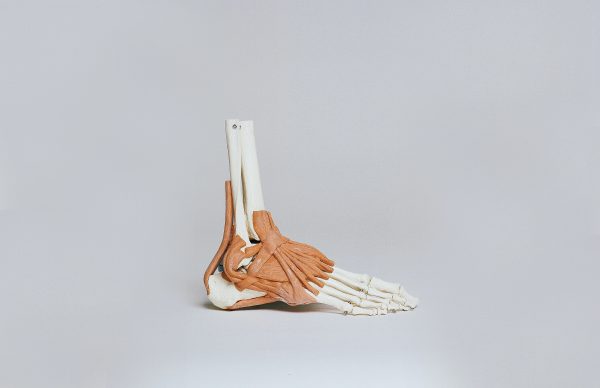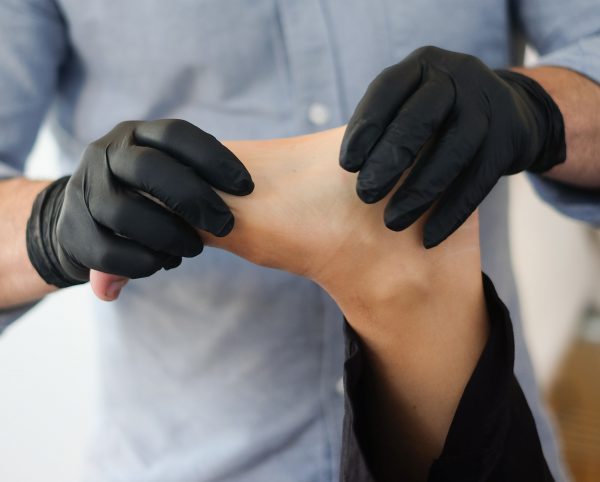Sesamoiditis is a common foot injury that affects people of all ages and activity levels. This foot condition is both preventable and treatable. Unfortunately, it’s commonly misdiagnosed, making healing more difficult than it needs to be.
Sesamoiditis is an inflammation of the tendons in the foot, although some people may also use the term for inflammation in the knee. This is incorrect, as inflammation of the two tendons that are attached to the patella — the quadriceps tendon and patellar tendon — should actually be categorized as tendonitis.
What is a Sesamoid and What are Sesamoid Injuries?
A sesamoid is a bone that is embedded in a tendon. You can find sesamoids in several joints throughout the body. In the foot, sesamoids are two pea-shaped bones that are located in the ball of the foot, right beneath the big toe joint.
The three most common types of sesamoid injuries are turf toe, fractures, and sesamoiditis. The latter, Sesamoiditis is a common injury in dancers and certain other types of athletes. The condition will usually come from straining or overworking the tendons.

Diagnosing Sesamoiditis
A sesamoiditis diagnosis begins with a physical examination of the foot.
Your doctor will look for tenderness around the ball of the foot, and will move your toe in different directions. By doing that, your doctor is looking for the limit’s on the flexibility of your toe, along with your pain level.
Depending on how your initial examination goes, you may be sent for an xray of one or both feet in order to compare the structures and rule out a possible fracture. Bone scans, ultrasounds and MRI imagery may all further help to diagnose sesamoiditis and related injuries with a more precise, enhanced look at tendons and soft tissues.
Breaking Down Sesamoiditis Treatment
Sesamoiditis foot injuries are treatable. Most often, it just takes simple anti-inflammatory medications and rest.
In a lot of cases, a lifestyle change can prevent further flare ups or worsening of the condition. For example, many patients are told to avoid wearing high heels or shoes without a lot of support (like no-cushion summer shoes and sandals).
Initial Sesamoiditis treatment can include immobilization, such as with a walking boot or cast. For less severe cases, patients are typically asked to temporarily avoid activities that put pressure on the ball of the foot, and to reduce any activity that causes pain or discomfort.
Physical therapy may be another component in a sesamoiditis treatment plan. Not only can physical therapy help patients to heal and work through current sesamoiditis, it can help prevent future occurrences by correcting issues with the body mechanics or movements that caused the condition.
Pain relief for sesamoiditis is typically just ibuprofen or aspirin, over the counter anti-inflammatory medications and cortisone injections. Custom and retail orthotic devices are also often recommended to help reduce onset and ongoing discomfort.
In severe cases, when sesamoiditis doesn’t respond to nonsurgical treatments, surgery may be required. While this more extreme measure isn’t very common, it’s still a possibility.

Prevention of Sesamoiditis
You may not always be able to prevent sesamoiditis, but a few easy adjustments to your lifestyle can greatly reduce your chances of developing the condition.
- Wear sensible shoes, such as sneakers.
- Choose footwear with a wide toe box, so your toes aren’t cramped together.
- If you’re in a job that requires a lot of heavy lifting, crouching, and other activities that put pressure on the ball of your foot, use orthotic insoles.
- Replace your running shoes and/or other sneakers after 300-500 miles or every 6 months, if you’re fairly active, since their cushioning compacts over time. Many running apps track your sneaker mileage and will tell you when it’s time to kick those kicks to the curb.

Go See a Pro and Get to the Bottom of Your Foot Pain
Experiencing pain? Schedule an appointment with us today! We can help determine if sesamoiditis is the problem, or if there are other issues that are causing discomfort in your feet. We’re here to find the problem and treat it, so you can feel better fast and get back to living your life.
Give our team at Foot & Ankle Group a call at 239.936.5400 to schedule an appointment, today!
Categorized in: Blog
Comments are closed